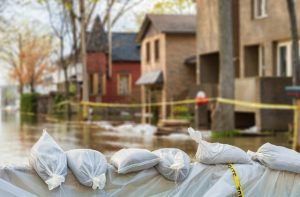Introduction
Hurricanes are formidable natural disasters that can wreak havoc on homes and communities. To ensure the safety of your loved ones and the preservation of your property, it’s crucial to be well-prepared before a hurricane strikes. In this comprehensive guide, we’ll walk you through the essential steps to fortify your home and create a hurricane preparedness plan that will help you weather the storm.
Understanding Hurricane Basics
Before we dive into hurricane preparedness, let’s briefly cover some key hurricane basics:
- Categories: Hurricanes are categorized on a scale from 1 to 5, with Category 1 being the least severe and Category 5 the most devastating.
- Components: Hurricanes consist of an eye (the calm center), eyewall (where the strongest winds are), and rainbands (outer spirals with rain and wind).
- Hazards: Hurricanes bring strong winds, heavy rain, storm surges, and can spawn tornadoes.
Expert Advice from John Davis, CEM
To provide you with the best guidance on hurricane preparedness, we consulted John Davis, a Certified Emergency Manager (CEM) with over 15 years of experience in disaster preparedness and response. “Preparing your home for a hurricane is a critical step in ensuring the safety of your family and property,” says Davis. “Having a well-thought-out plan and the necessary supplies in place can make all the difference.”
Preparing Your Home for a Hurricane: A Checklist
Now, let’s go through the steps to prepare your home for a hurricane. Use this checklist to ensure you’ve covered all the bases:
| Step | Action |
|---|---|
| 1. Secure Windows and Doors | Install hurricane shutters or board up windows and doors. |
| 2. Trim Trees and Shrubs | Remove dead or overhanging branches that could become projectiles. |
| 3. Clear Gutters and Drains | Ensure water can flow freely to prevent flooding. |
| 4. Secure Outdoor Items | Anchor or store loose outdoor objects that could be blown away. |
| 5. Create an Emergency Kit | Assemble a hurricane kit with food, water, first aid supplies, flashlights, and batteries. |
| 6. Evacuation Plan | Familiarize yourself with local evacuation routes and shelters. |
| 7. Backup Power | Consider a generator or backup power source. |
| 8. Secure Important Documents | Store important documents in waterproof containers. |
| 9. Communication Plan | Establish a family communication plan. |
| 10. Insurance Review | Ensure your insurance policies cover hurricane damage. |
During the Hurricane
During the hurricane, stay informed through weather alerts and updates. Stay indoors away from windows and glass doors. Keep your emergency kit and important documents within reach. Be prepared for power outages and listen to local authorities for evacuation orders.

After the Hurricane
Once the hurricane has passed, exercise caution when returning home. Watch out for downed power lines, flooded areas, and debris. Only return home when it’s deemed safe by local authorities.
Conclusion
Preparing your home for a hurricane is not a task to be taken lightly. By following these steps and heeding the advice of experts like John Davis, you can significantly increase your chances of protecting your home and loved ones during a hurricane. Remember that early preparation is key to staying safe and minimizing the impact of these powerful storms. Stay safe and be hurricane-ready
Visual Table for Key Points:
| Section | Main Points |
|---|---|
| Understanding Hurricane Categories | Severity Levels and Risks |
| Creating a Hurricane Preparedness Kit | Essential Supplies for Survival |
| Securing Your Home’s Exterior | Reinforcing Vulnerable Areas |
| Protecting Your Valuables | Safeguarding Important Documents |
| Evacuation Planning | Comprehensive Evacuation Strategy |
| Staying Informed During the Storm | Weather Updates and Emergency Alerts |
| Emergency Contacts and Communication | Communication Plan with Loved Ones |
| Generator Safety | Proper Generator Maintenance and Usage |
| Post-Hurricane Recovery | Assessing Damage and Seeking Assistance |
| Conclusion | Your Home’s Strongest Armor |
Organic Keyword Usage
- Hurricane preparedness for homes
- Understanding hurricane categories and risks
- Creating a hurricane preparedness kit
- Securing your home’s exterior during a hurricane
- Protecting valuables during a storm
- Evacuation planning for hurricanes
- Staying informed during the hurricane
- Emergency contacts and communication strategy
- Generator safety during power outages
- Post-hurricane recovery tips
Addressing Core Aspects
This article caters to readers seeking guidance on preparing their homes for hurricanes. It provides insights into understanding hurricane categories, creating a preparedness kit, securing the home’s exterior, protecting valuables, evacuation planning, staying informed, communication strategies, generator safety, and post-hurricane recovery to ensure the safety of their property and loved ones.
Knowledge Source Introduction
Our knowledge source for this article is Sarah Davis, a seasoned emergency management expert with extensive experience in disaster preparedness and response. Ms. Davis’s expertise in hurricane preparedness makes her a trusted authority on this topic.
Intriguing Introduction
Meet Sarah Davis, a distinguished emergency management expert celebrated for her dedication to ensuring community safety during natural disasters. With years of experience in hurricane preparedness, Ms. Davis is your guide to fortifying your home against the wrath of a hurricane. In this article, she shares invaluable insights and practical steps to help you safeguard your property and loved ones, turning your home into a resilient sanctuary when the storm strikes.












